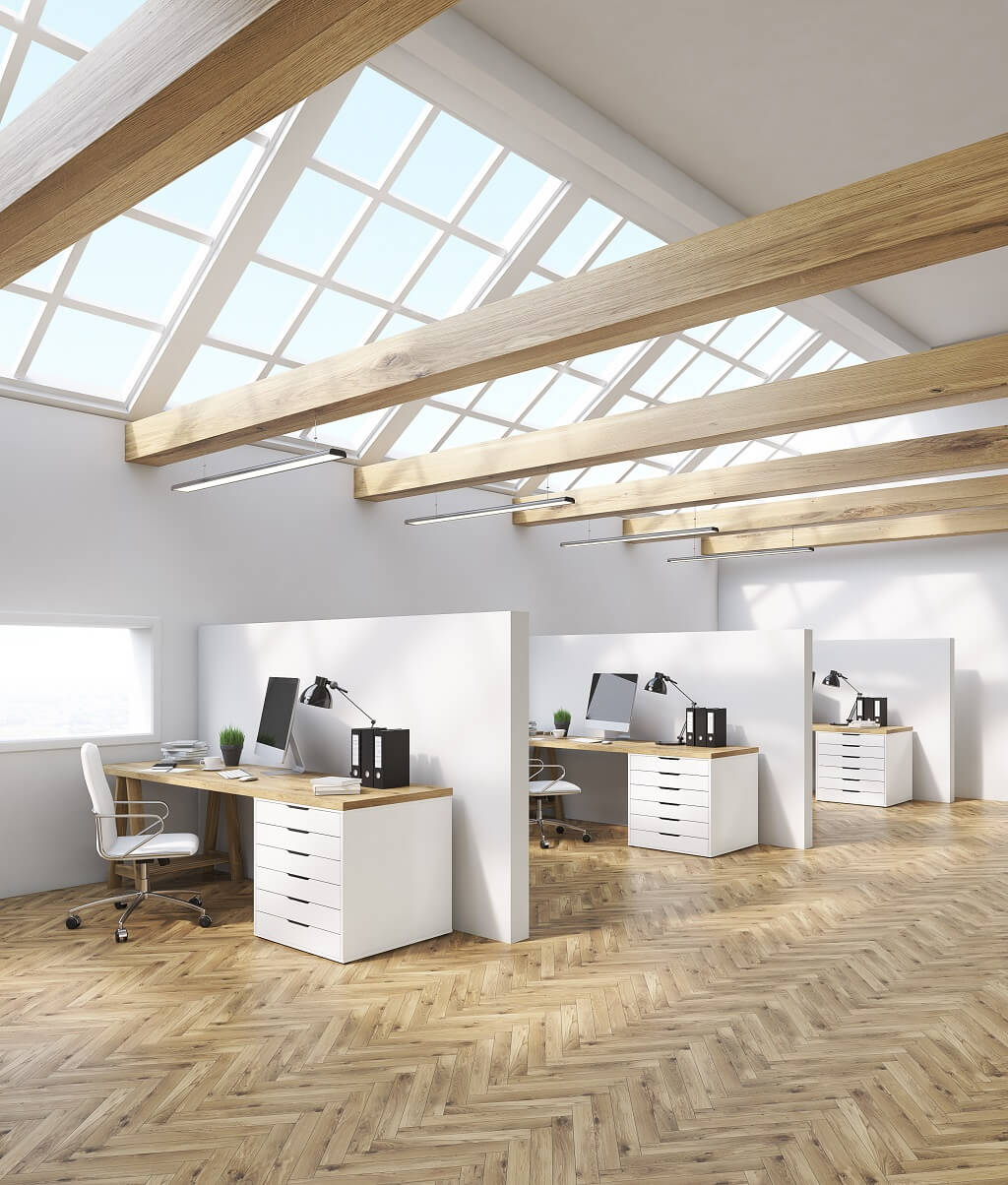The push to make buildings more sustainable is nothing new, as the industry has largely embraced the growing trend. The U.S. Green Building Council’s LEED (Leadership in Energy & Environmental Design) certification system is the most well-known name in the space, as there are more than 59,000 LEED-certified projects totaling 6 billion square feet in 164 countries.
For those up to a more rigorous, holistic endeavor, there is the International Living Future Institute’s Living Building Challenge. Candidates navigate requirements such as the incorporation of biophilic components, the building site’s impact on neighboring buildings and the environment and its ability to produce as much — or more — energy than it consumes. The cost-savings component of that program has struck a chord with private and public entities alike.
However, another trend related to sustainability is making waves in the industry: wellness. Although less definable than energy-efficient measures, wellness-minded design is growing in popularity as younger generations are pushing for healthier environments in their workplaces and homes.
From quantifiable to more ambiguous
There are several emerging sustainability measures and certifications, but what is the one thing they have in common? It’s the fact that “sustainability is mathematically quantifiable,” said Dave Hubka, director-commissioning for Transwestern’s Sustainability Services group.
However, that isn’t the case for the budding attention to occupant wellbeing.
Some wellness features in buildings are measurable, as evidenced by the International Well Building Institute’s (IWBI) Well Building Standard certification. Some elements — like particulates in water or the kind of food being sold in the company breakroom — are measurable, but what constitutes one employee’s bliss might be another’s discomfort.
“I think that it is a kind of milieu we’re in driven by younger people who are much more sensitized to everything from environmental issues to sustainability to wellness and quality of life.” John Kirk, Architect and partner at Cooper Robertson
“Wellness features, it’s more difficult to quantify the effects on people,” Hubka said. But that doesn’t mean business owners, landlords and developers aren’t trying.
Indicating the popularity of the health and wellness philosophy, IWBI has found partners in the American Institute of Architects, the Cleveland Clinic, other sustainability certification programs like LEED and design giants like HKS — which are all trying to create healthy environments for occupants.
Millennials driving the trend
The ever-increasing popularity of healthy living has something to do with it, but that’s nothing compared to the sea change that millennials have brought to the wellness table. “I think that it is a kind of milieu we’re in, that we’re probably going to stay in, driven by younger people who are much more sensitized to everything from environmental issues to sustainability to wellness and quality of life,” said John Kirk, architect and partner at Cooper Robertson.
Offices are the biggest testing ground thus far, according to Hubka, with features designed to make workers happier, and therefore more productive. Food choices, high-quality lighting, water and air all serve to create healthier, energized surroundings, but employers are also adding those nebulous quality of life components like an open-desk, first-come-first-served policy called “free addressing,” window seating, quiet rooms, days off to perform charity work, mindful eating areas and stress and addiction counseling.
All considered contributors to wellness — whether certified or not — many of these changes can only be quantified by looking at employee retention, Hubka noted.
Where wellness meets the home
As millennials and other demographics come to expect healthier workplaces, they’re likely going to demand it in their living and other social environments as well. Kirk said that in the past, those in the market for custom high-end residences rarely thought twice about the impact of their building on their living environment, but that’s starting to change.
“It seems like LEED and sustainability has become more mainstream. The next wave of what’s to come is the people.” Dave Hubka, Director-commissioning for Transwestern’s Sustainability Services group
Robert Thorne, CEO and co-founder of The Wellness Habitat Company, said many people have started to realize that while their wellness levels have been beefed up at work, diets have changed for the better and exercise routines have gone into high gear, they’ve been neglecting air quality, toxins, negative-impact lighting and other important health components in their own homes.
Through the state-of-the-art systems that can, for example, introduce and circulate probiotics in the air, diffuse homeopathic scents throughout the home at the push of a smartphone button, coax residents into a natural circadian rhythm and create stepped water purification systems, homeowners can create a space that connects the dots of their attempts at a healthier lifestyle, according to Thorne. “Your house now starts working for you,” he said.
Wellness Habitat also serves the up-and-coming wellness needs of the hospital, hotel, office and multifamily industries. These features can help guests quickly overcome jet lag or help with hospital air quality. Of course, many occupants of high-rises or other residential developments are interested in being as healthy as possible as well.
As millennial-inspired ideas of work-life balance spread though the marketplace, that trend will alter corporate culture, particularly as millennials begin to take over in executive positions and ownership, according to Kirk.
“It seems like LEED and sustainability has become more mainstream,” Hubka said. “The next wave of what’s to come is the people.”


